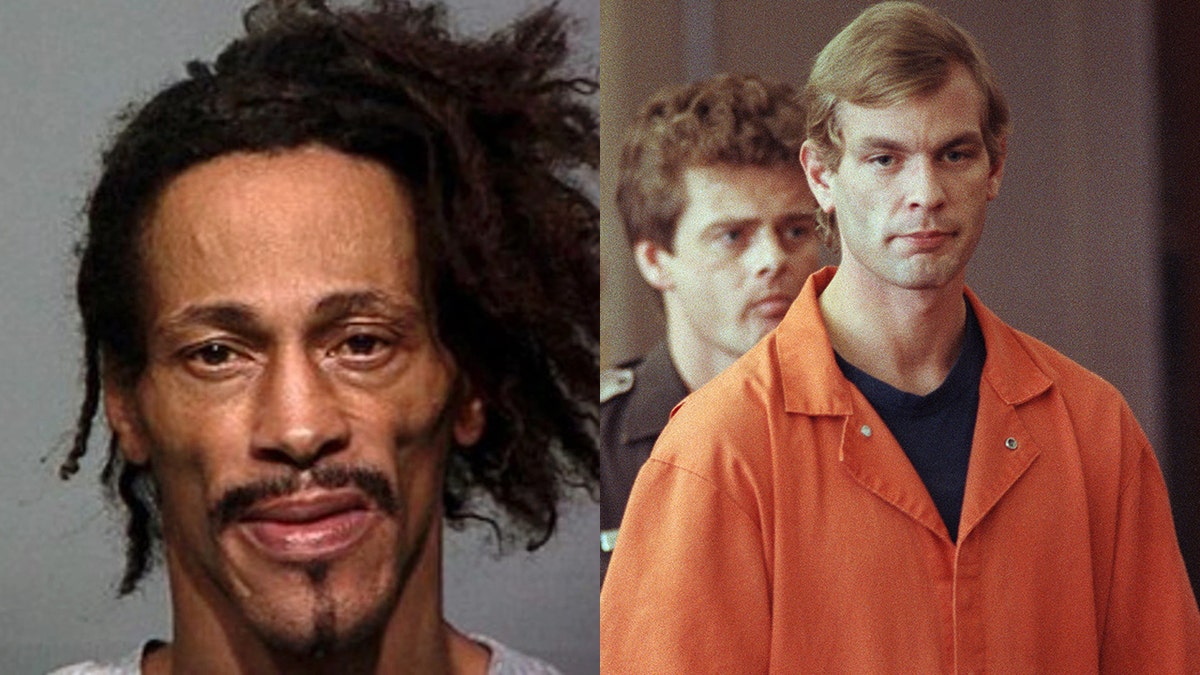Jeffrey Dahmer's Death: How Did The Serial Killer Die? [Details]
Did justice find Jeffrey Dahmer in the end, or did his demise simply add another layer of horror to an already unspeakable narrative? The death of Jeffrey Dahmer on November 28, 1994, marked the end of a chapter, but it did not erase the chilling details of his crimes or the lingering questions about a killer who preyed on the vulnerable.
The resurgence of interest in serial killer Jeffrey Dahmer, fueled by the Netflix true crime drama, "Dahmer Monster: The Jeffrey Dahmer Story," has thrust the details of his life and death back into the spotlight. The series, along with numerous documentaries and books, has reignited public fascination with the man known as the Milwaukee Cannibal, prompting many to revisit the circumstances surrounding his gruesome end. Dahmer's death, much like his crimes, was violent and unsettling.
Jeffrey Lionel Dahmer, born on May 21, 1960, committed heinous acts between 1978 and 1991, claiming the lives of 17 young men and boys. His methods were particularly disturbing, involving necrophilia, cannibalism, and the dismemberment of his victims. Dahmer targeted marginalized individuals, luring them to his apartment with promises of money or sexual encounters, only to subject them to unspeakable horrors. The revelation of his crimes in 1991 sent shockwaves through America and the world, leading to his arrest and subsequent conviction.
- Vegamovies Is It Safe Stream Movies Legally Alternatives
- Night Mood 2023 Mojflix Originals Web Series Ep 1 Watch Now
| Category | Information |
|---|---|
| Full Name | Jeffrey Lionel Dahmer |
| Other Names | Milwaukee Cannibal, Milwaukee Monster |
| Date of Birth | May 21, 1960 |
| Place of Birth | Milwaukee, Wisconsin, USA |
| Date of Death | November 28, 1994 |
| Place of Death | Columbia Correctional Institution, Portage, Wisconsin, USA |
| Cause of Death | Murdered by fellow inmate |
| Victims | 17 young men and boys |
| Conviction | 15 consecutive life sentences |
| Crimes | Murder, necrophilia, cannibalism, dismemberment |
| Prison | Columbia Correctional Institution, Portage, Wisconsin |
| Killer | Christopher Scarver |
| Reference: Biography.com - Jeffrey Dahmer |
Dahmer's trial was a spectacle, filled with disturbing testimonies and graphic evidence. He was ultimately sentenced to multiple life sentences, totaling over 900 years in prison. He was incarcerated in the Columbia Correctional Institution, a maximum-security prison in Portage, Wisconsin. The hope was that within those walls, he would be unable to inflict further harm on society.
However, Dahmers time in prison was relatively short-lived. On November 28, 1994, just a few years into his sentence, he met his end. The circumstances surrounding his death were brutal and eerily reminiscent of the violence he had inflicted upon his own victims. Dahmer was murdered by a fellow inmate, Christopher Scarver, while performing cleaning duties in a bathroom. Scarver used a metal bar from a weightlifting set to crush Dahmer's skull, also smashing his head against the wall repeatedly. The attack was swift and decisive, leaving Dahmer dead at the scene.
Christopher Scarver, born on July 6, 1969, was serving a sentence for a 1990 murder. He later claimed that he killed Dahmer because he was repulsed by Dahmers crimes and the taunting behavior he exhibited in prison, such as shaping his food into body parts. Scarver also killed another inmate, Jesse Anderson, during the same attack. Anderson was serving time for the murder of his wife.
- Paz Vega Vegamovies Guide What You Need To Know
- Hubmasa Safe Platform Or Risky Website The Facts Revealed
The news of Dahmers death spread rapidly across America, eliciting a range of reactions. Some people celebrated his demise, viewing it as a form of justice for his heinous acts. For the families of Dahmer's victims, his death brought a sense of closure, though it could never fully erase the pain and suffering he had caused. Others mourned the loss of life, arguing that Dahmer should have been given the opportunity for rehabilitation or at least remained alive to face the consequences of his actions.
The circumstances of Dahmers death also raised questions about the prison system and the safety of inmates. How could such a notorious and closely watched prisoner be murdered in such a violent manner? Investigations into the incident revealed lapses in security and supervision, leading to reforms aimed at preventing similar incidents in the future.
Adding to the grim narrative, the details of Dahmer's death bore an unsettling similarity to his first murder. In 1978, Dahmer bludgeoned a hitchhiker named Steven Hicks to death. The fact that Dahmer himself was killed by blunt force trauma added another layer of macabre irony to the story.
The state of Wisconsin abolished the death penalty in 1853, long before Dahmer was convicted in 1992. Therefore, the death penalty was never an option for him, regardless of the severity of his crimes. Instead, he received multiple life sentences, intended to keep him incarcerated for the remainder of his natural life.
Dahmers methods were particularly disturbing. While most of his victims were young men, one, Konnerock, was reportedly only 14 years old when Dahmer injected acid into his brain. Another victim, Jamie, was also 14 years old and was strangled to death, dismembered, and his remains disposed of. Dahmer often used hydrochloric acid or boiling hot water to inject into his victims, causing unimaginable pain and suffering.
The gruesome nature of Dahmers crimes has been immortalized in numerous books, articles, and documentaries. These include "Milwaukee Massacre: Jeffrey Dahmer and the Milwaukee Murders" (1992), "A Fathers Story" by Lionel Dahmer (1994), and "Dark Journey, Deep Grace: Jeffrey Dahmers Story of Faith" by Lindy Adams and Roy Ratcliff (2006). Each of these works offers a different perspective on Dahmers life, his crimes, and the impact he had on society.
Despite Dahmers death, the pain and grief caused by his actions continue to affect the families and loved ones of his victims. The scars of his crimes run deep, and the healing process is ongoing. His life and crimes remain a dark chapter in American history, a reminder of the depths of human depravity and the importance of vigilance in protecting the vulnerable.
While Jeffrey Dahmer may not have been Americas worst serial killer in terms of the number of victims, his crimes were particularly shocking and disturbing. With 17 confirmed victims, he is eclipsed by the likes of Ted Bundy and Gerald Stano, who claimed many more lives. However, the depravity of Dahmers actions, involving cannibalism and necrophilia, set him apart and cemented his place in the annals of criminal history.
The case of Jeffrey Dahmer continues to fascinate and horrify, prompting ongoing discussions about the nature of evil, the causes of violence, and the responsibilities of society to protect its most vulnerable members. His death on November 28, 1994, marked the end of his time in prison, but it did not end the suffering he caused or the questions that continue to surround his life and crimes.
In 1991, authorities raided Dahmer's apartment in Wisconsin after one of his victims managed to escape. Inside, they discovered a scene of unimaginable horror, with body parts, chemicals, and other evidence of his gruesome activities. The discovery led to his arrest and the subsequent exposure of his crimes to the world.
The news of Jeffrey Dahmers death was met with mixed reactions. Some saw it as justice for his heinous crimes, while others mourned the loss of life and the missed opportunity for him to be rehabilitated. What was the impact of Jeffrey Dahmers death on death row? It certainly sparked debate about the morality of capital punishment and the treatment of prisoners convicted of even the most heinous crimes.
Jeffrey Dahmer's story is a terrifying true account of rape, murder, and cannibalism. His murder trial, his death at the hands of his fellow inmates, and how his crimes rocked the nation are all part of this horrific narrative.
Jeffrey Dahmer was a serial killer and cannibal responsible for the deaths of at least 17 people. His gruesome legacy continues to haunt the collective consciousness, ensuring that his name remains synonymous with evil.
Dahmers life and crimes are frequently referenced in popular culture, often sparking controversy and debate. The Netflix series "Dahmer Monster: The Jeffrey Dahmer Story" is just one example of how his story continues to be retold and reinterpreted for modern audiences.
One of the most disturbing aspects of Dahmers crimes was his use of drugs to incapacitate his victims. He would often use hydro folic acid or boiling hot water to inject into them, causing them to become compliant and unable to resist his horrific acts.
Christopher Scarver, born on July 6, 1969, is an American convicted murderer known for the 1994 murders of his fellow inmates Jeffrey Dahmer and Jesse Anderson at the Columbia Correctional Institution in Wisconsin. His actions brought an end to Dahmers reign of terror and raised questions about the nature of justice and retribution.
- Vegamovies 20 Is It Safe Legal The Ultimate Guide 2024
- Pen15 Relive Middle Schools Awkwardness Why We Love It

Inmate who murdered serial killer Jeffrey Dahmer explains why he did it

‘Monster’ Jeffrey Dahmer survivor never recovered after harrowing

Serial killer Jeffrey Dahmer's Ohio childhood home for sale Fox News